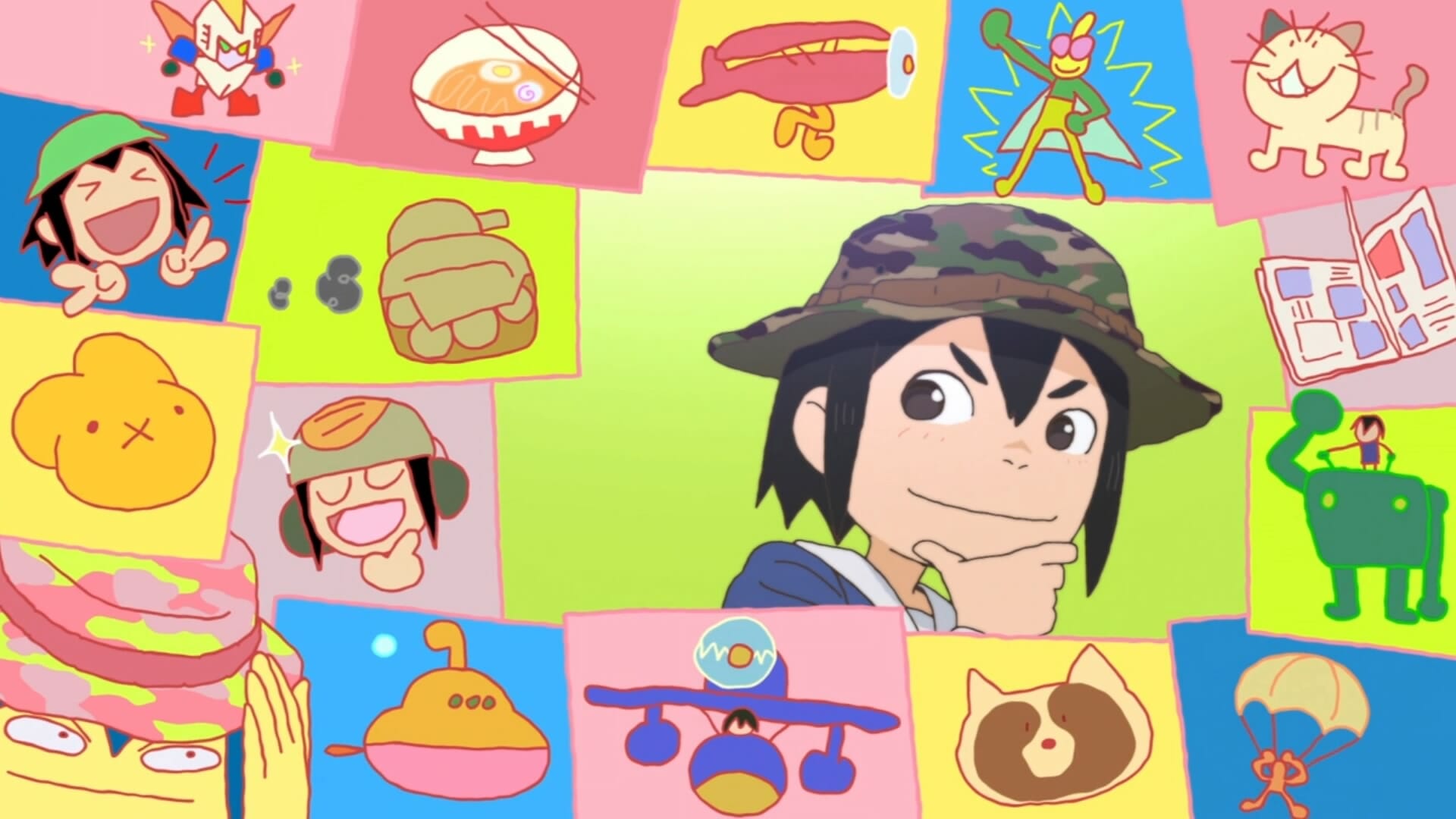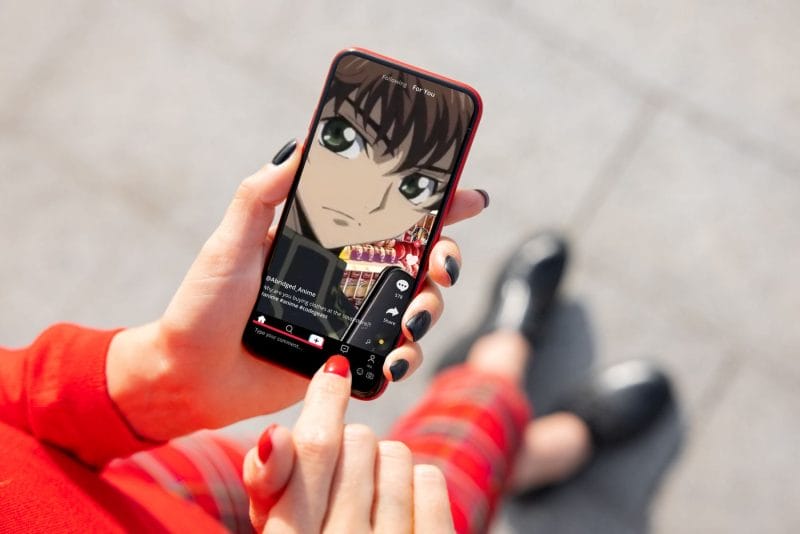For neurodivergent people, finding positive depictions of ourselves in mainstream media is a difficult task. The majority of portrayals found in popular culture are works created by and for neurotypical people, who do not have the personal experience of being neurodivergent and may have consulted inaccurate definitions of specific forms of neurodiversity… if they did any research at all.
This has resulted in the spread of misinformation at “best”, and the outright vilification of neurodiverse people at worst. While things are gradually getting better, with autobiographies and fictional works created by openly neurodivergent creators becoming more commonplace, the fact remains that the vast majority of media depictions of neurodiversity come from the perspective of neurotypical creators and are often rooted in cliché or unsympathetic stereotypes.
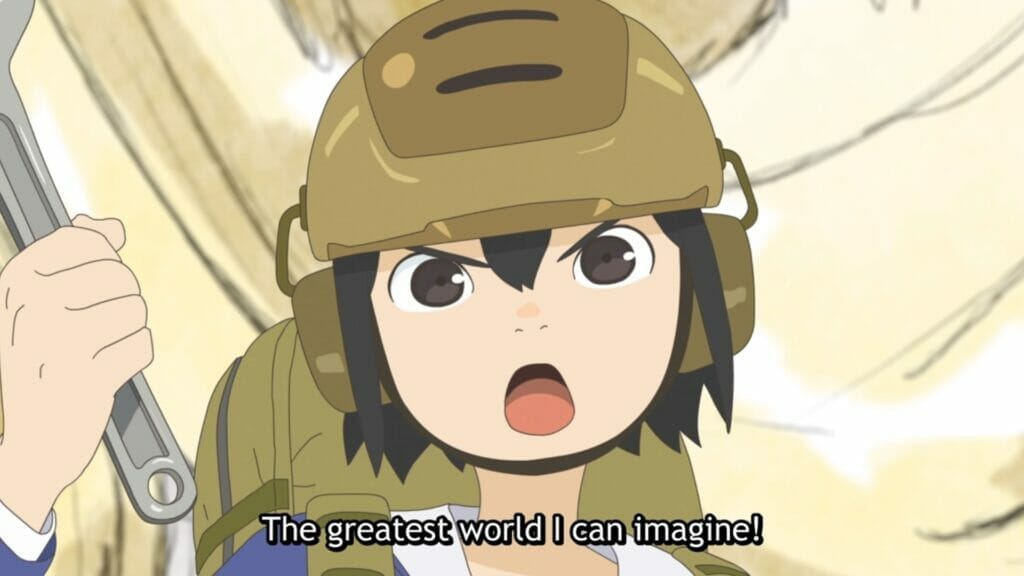
This is part of the reason why Keep Your Hands Off Eizouken! is such a revitalizing series for neurodivergent viewers. Eizouken is one of the few examples of a manga created by an openly neurodivergent author, Oowara Sumito, who has publicly discussed his learning disabilities and diagnoses of autism and ADHD. Furthermore, Oowara has confirmed in an interview with Livedoor that the series partially reflects his high school experiences, giving a neurodivergent reading of the source material and adaptations greater legitimacy.
The series follows the lives of three high school girls who set out to create a club, the film studies club or “Eizouken” as it is known among international fans, to create animation. As the series progresses, they begin to develop their skills, both individual and collective, to not only produce animation they are proud of but also to improve themselves by pushing their boundaries further.
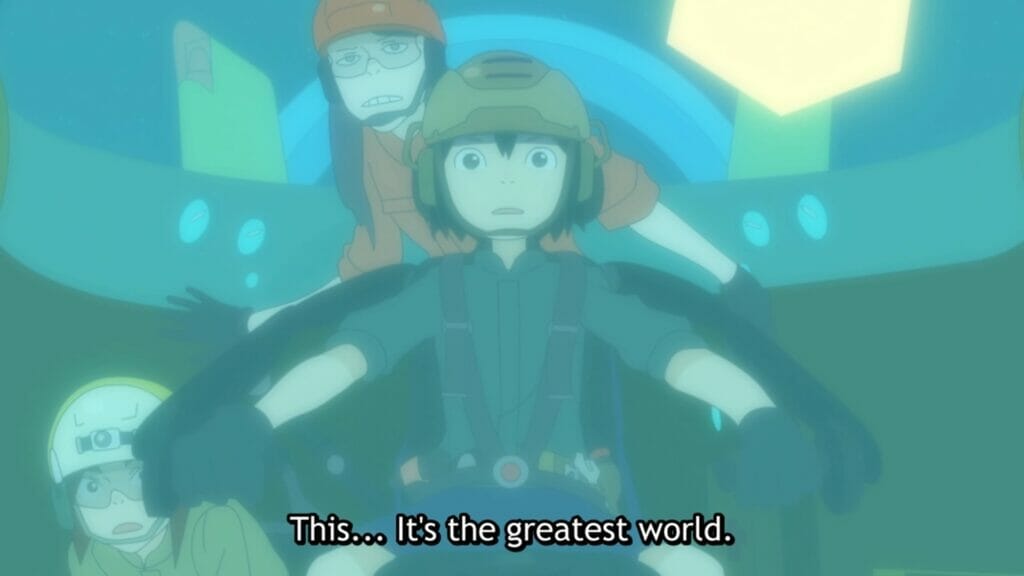
There are many factors of this series that resonated with neurodivergent readers and viewers, particularly the intense passion that all the characters have for their area of interest, but the most crucial factor that many viewers have empathized with is the character of Asakusa Midori. One of the series’ main leads, Midori is an animation enthusiast who fell in love with the medium from a young age, leading her to pursue a dream of creating her own animated films.
As an autistic woman with ADHD, Midori’s entire character resonated with me in a way that few other fictional characters have. Her body language, way of moving, devotion and passion for animation, interactions with other people, and even her bouts of unproductivity, all reminded me of aspects of myself.
And these traits were not exclusive to one specific episode, but rather continual occurrences, reinforcing that Midori is meant to be recognized as a neurodivergent protagonist. A few of these instances, and why they are important, will be discussed and examined throughout this article.
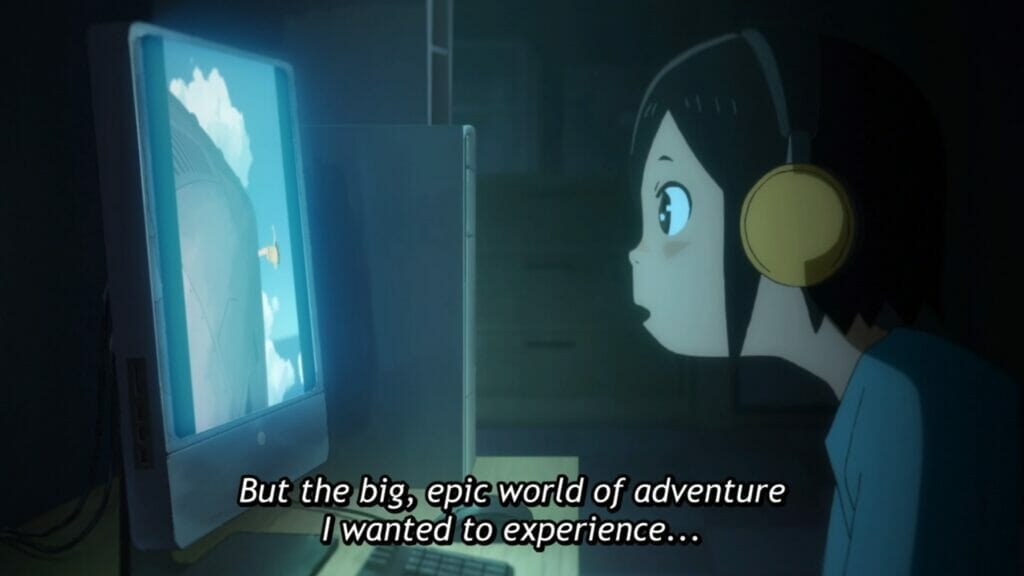
During Eizouken’s first episode, the audience witnesses Midori’s “epiphany” moment: where she transforms from a child who watches cartoons to merely pass the time, to an animation enthusiast. As an elementary student, Midori stumbles across the series Future Boy Conan through a streaming service. Originally she views the series from her couch at home, wrapped up in blankets, with a warm beverage and snacks, appearing to watch a show as a means of ASMR rather than entertainment.
However, as she progresses through the series something “clicks” for her; she becomes enraptured, watching the ways the characters and environments move, creating the illusion of a living, breathing world. Her eyes widen in attentive wonder, she moves from her couch to a computer chair so she can sit as close to the screen as possible, her drink and snacks are completely forgotten.
This scene profoundly resonated with me, as it demonstrates two fundamental experiences that autistic and ADHD people can identify with. The first is that Midori is exhibiting something that is colloquially known as “hyperfixation”, which is when a person focuses so intensively on one specific item or task that they are almost incapable of observing anything else in their surroundings.
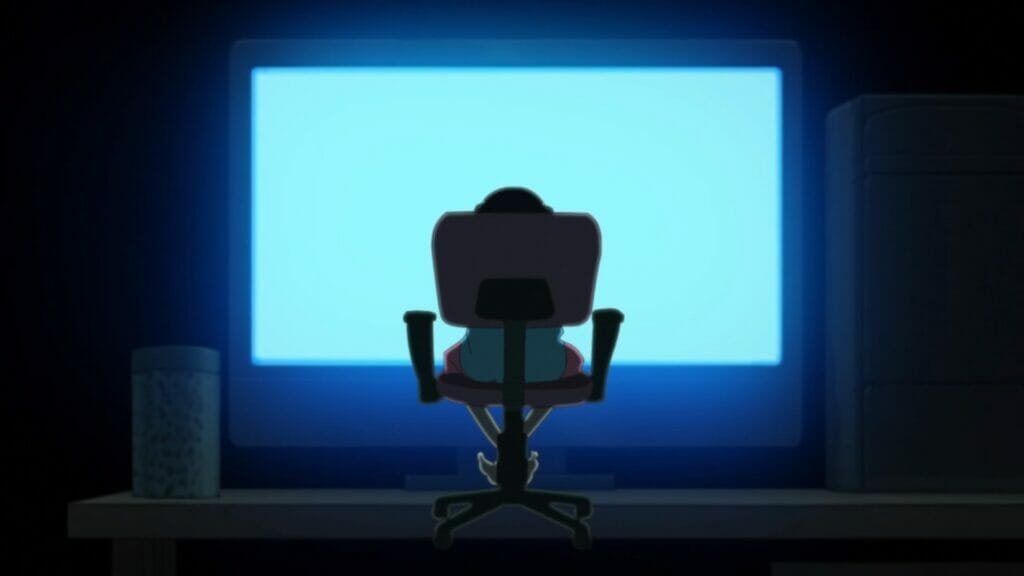
The second is that she has had an epiphany moment of discovering something she is highly passionate about. While most people have their enjoyments in life, the level of passion that neurodivergent people experience is considered to be more “intense” in comparison to their neurotypical counterparts, with some people having difficulty paying attention to things other than their passions. These passions, commonly known as “special interests”, are part of the diagnostic criteria for autistic and ADHD people alike.
On a more personal level, it reminded me of the feeling I get whenever I would discover something that would just “click” with me in a way that nothing else would, leading me to want to learn more about it or find things that were similar to it. Discovering these things, and enjoying them in whatever capacity I can, is one of my favourite feelings, and is one of my favourite aspects of being autistic.
As the series progresses, Midori’s actions show that this neurodivergent behaviour is not merely a one-time fluke, but a consistent, sincere, and essential part of her overall character. She continually exhibits habits that autistic and ADHD people commonly showcase in our daily lives, be it through displays of happiness or anxiety, coping mechanisms, and responses to interacting with others.
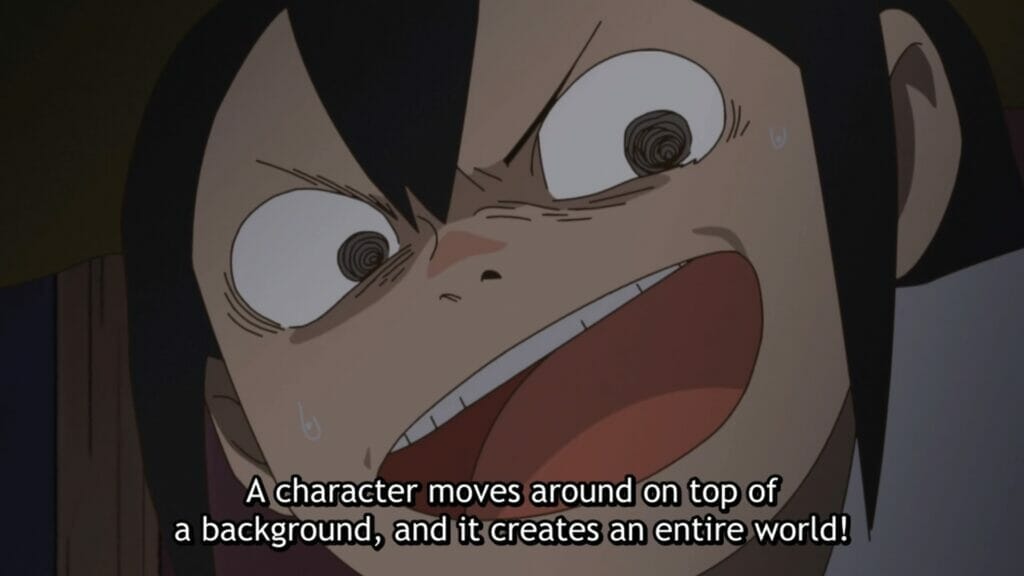
One of these behaviours is Midori’s love of info-dumping about her passions to people she trusts enough to listen, specifically other members of the Eizouken club. Info-dumping is a process in which a person, typically those on the autistic spectrum, begins imparting a great deal of information on topics they are especially passionate about. These discussions can range from seconds to several minutes and typically serve as a one-way form of communication, in which the person info-dumping is the only person talking until they have completed everything they want to say to the listener.
It is a rather vulnerable process for the person speaking since not every recipient responds to such interactions positively. As many autistic people know, common responses to info-dumping usually involve telling the speaker to stop talking or to dismiss everything they said because it’s either “boring” or “uninteresting”. One such incident of this happened to me while I was in my graduate studies, as one of the members of my cohort openly mocked me for my interest in animation in front of our peers. The incident left me with a feeling of deep shame, making me feel uncomfortable bringing up any of my interests, animation or otherwise, with the rest of the group for fear of similar cruel remarks.
This type of response is demonstrated after Midori tries to explain to Kanamori Sayaka why she loves animation so much.
The audience can directly see how Sayaka’s response hurts Midori, clearly disheartened by this dismissal and cowed into no longer sharing her passion. Typically, media depictions seem to delight in bringing down the feelings of their neurodivergent characters—sometimes even making their dismissal the punchline to a joke—but in the case of Eizouken, the audience is instead meant to empathize with Midori’s feelings of hurt.
This empathy is reinforced by Mizusaki Tsubame introducing herself to Midori with her own info-dump about animation. This near-instantaneous, if initially awkward, kinship forged through a mutual love of animation is similar to the way many autistic people have forged lasting friendships, myself included. Seeing such a scene in a piece of fiction is extremely rare on its own, and combined with validating the practice of info-dumping makes it all the more astonishing.
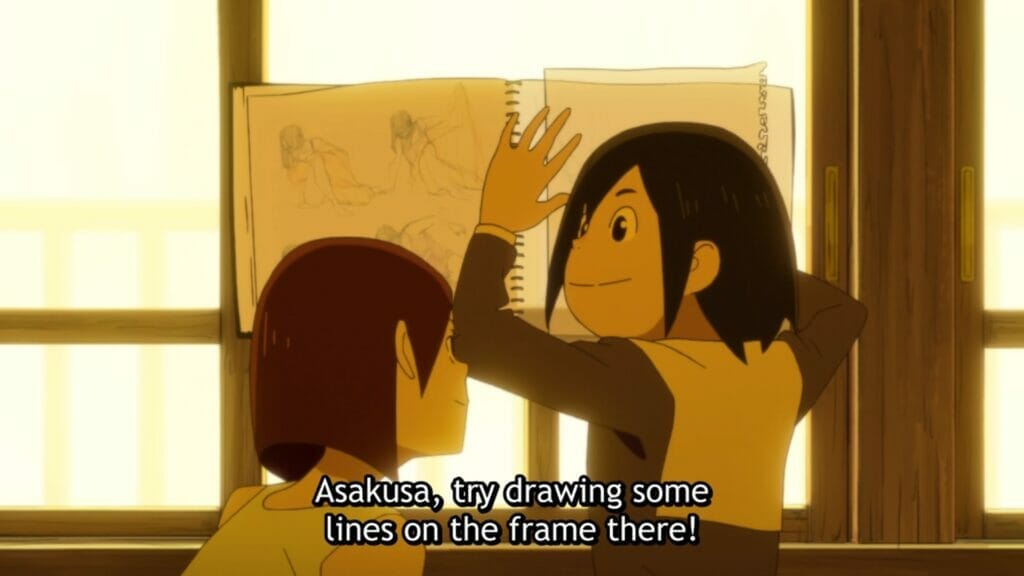
The other major achievement of the Eizouken series is how it allows Midori to showcase her stress and coping mechanisms in a myriad of different ways, without mocking these forms of self-care. Neurodivergent people can participate in repeated actions as a means of coping with stressful situations known, within the community, as stimming. These can include moving one’s body, (such as moving back and forth, waving their hands, or fiddling with their hair like Midori occasionally does) or interacting with an object (such as Tangles, stress balls, or other comforting items).
Several times Midori is shown interacting with a plush bunny that she brings around with her almost all the time. During moments of stress, she is shown touching the top of the bunny’s head with her hand or pressing it directly into her face and sucking it, using the physical sensation to calm herself. While this behaviour is brought up once, by Tsubame, it is not done in a mocking or deriding way, but rather as an observation that Midori is getting more stressed and is stimming to calm down. This is a rather great contrast to how most neurotypical people view stimming, as they typically view it as a “bad” and “abnormal” behaviour that needs to be stopped.
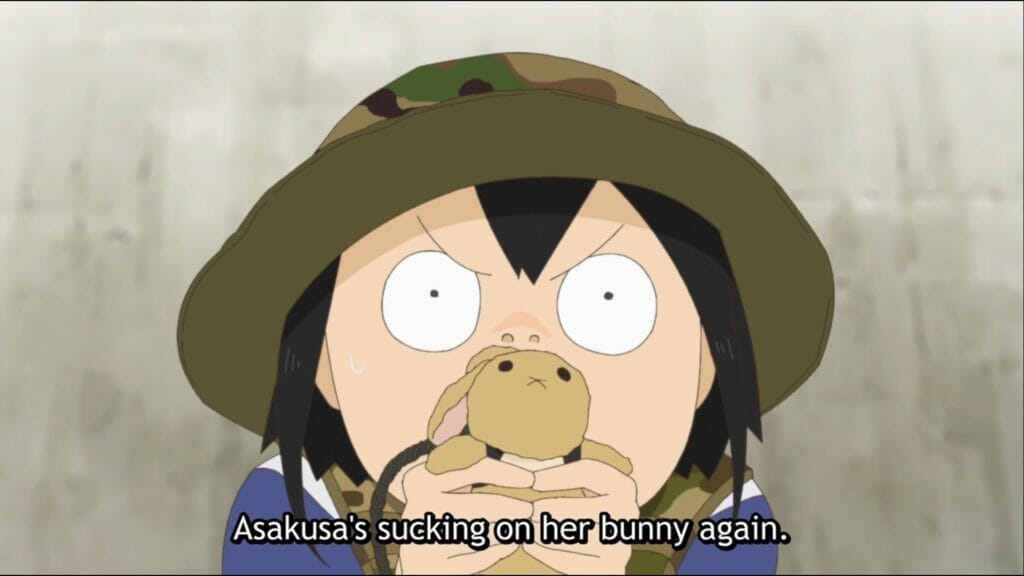
Furthermore, the series acknowledges that Midori does not do well when conversing with people she is not previously familiar with, or in highly crowded areas. Midori frequently states her discomfort with going to large public places, to the point that she will only go to certain events if she has a buddy to accompany her. Conversations with unfamiliar people are also exhausting for her, which is something that Sayaka is familiar with at this point.
After Midori and Sayaka return from a meeting with the art club to discuss anime production, Sayaka tells Tsubame that Midori has wandered off for a bit to unwind and reenergize (“She needs to oxygenate her depleted brain”). Needing to spend time by oneself to “oxygenate” or “recharge”, is a very common experience for autistic people, as we use additional energy to navigate through the world and interact with others.
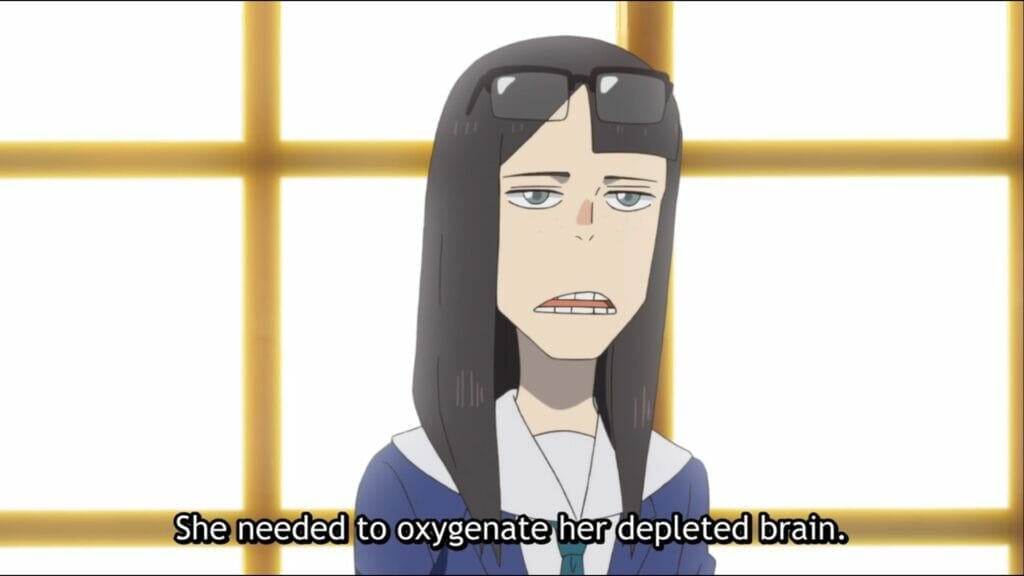
Unspoken social standards and instantly comprehending body language are things that many neurotypical people take for granted. To many on the autistic spectrum though, it can feel akin to a foreign language that your family and friends all naturally speak fluently, but you somehow cannot. The fact that Sayaka has acknowledged Midori’s need to destress after the meeting, and does not mock her, is another example of the show’s sympathetic character writing. Most autistic people feel as though they will be shamed for their desire to spend time on their own after a lengthy conversation. The series gives Midori a friend who, while sometimes brusque, understands her and is committed to overseeing her needs.
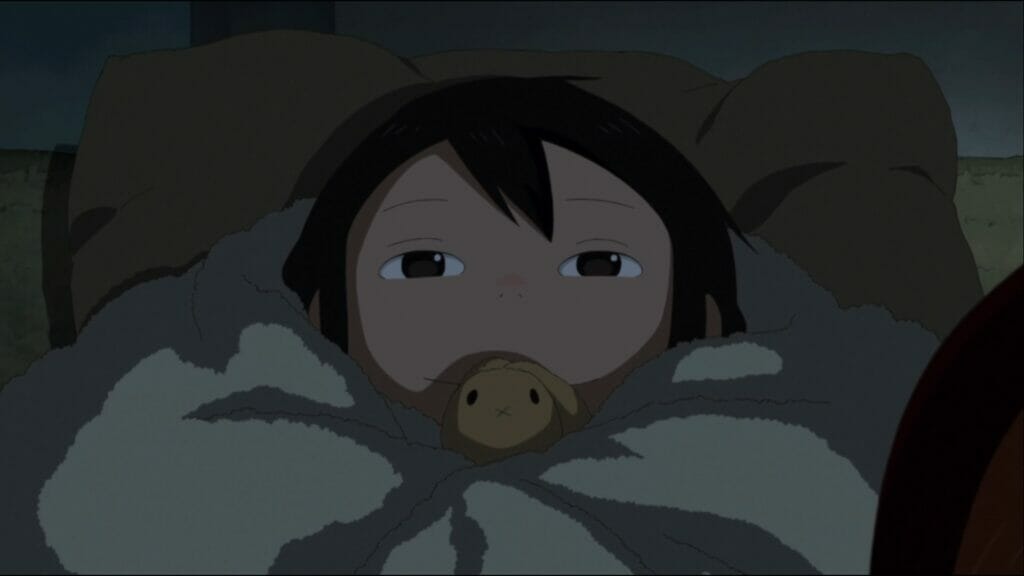
Overall, the greatest triumph of Keep Your Hands Off Eizouken! is its ability to show the lives of three passionate girls who can live their lives and pursue their dreams without shame. The fact that one of those three young women, Asakusa Midori, is a strongly neurodivergent-coded protagonist adds a great deal of weight to the series’ core theme. Midori can live her life and pursue her dream on her terms, without feeling pressured into dramatically changing herself to fit into a neurotypical world.
Watching Midori grow as an animation director, and as a person, was a rare joy to experience. Seeing her enjoy her life, spend time with trusted companions, and find ways to cope in an overwhelming world, reminded me of just how unexpected these mundane moments are in our general media landscape. Eizouken gives me hope about the future of neurodivergent stories, and the possibilities of witnessing more “great worlds” created when neurodivergent creators pursue their passions.


